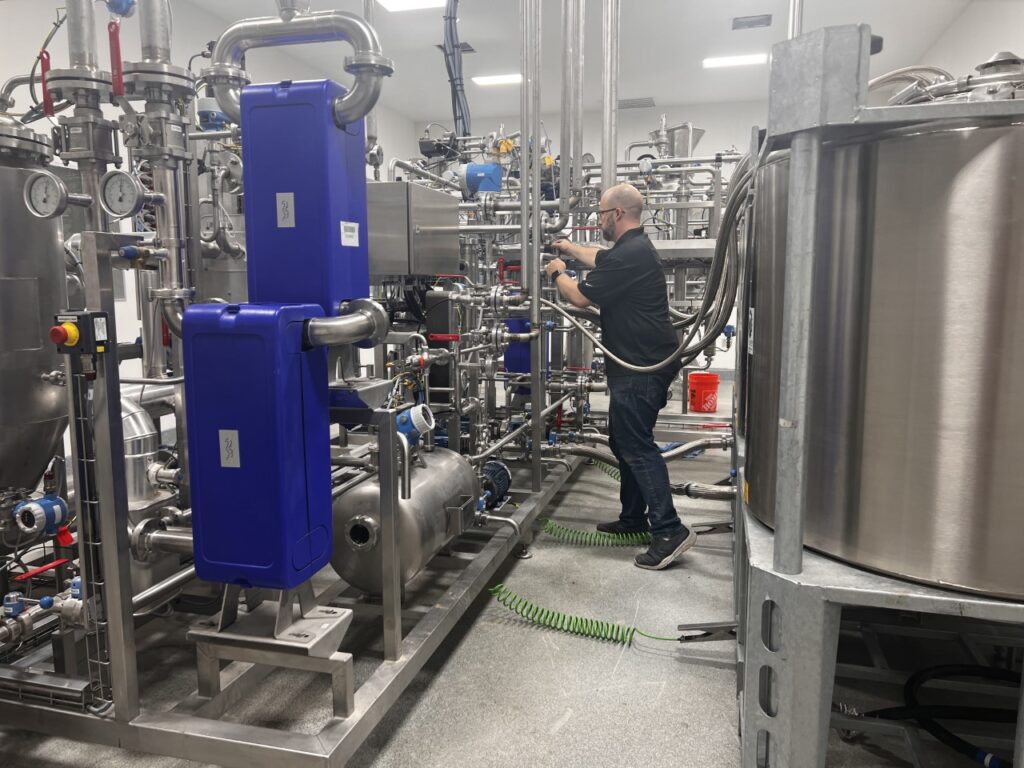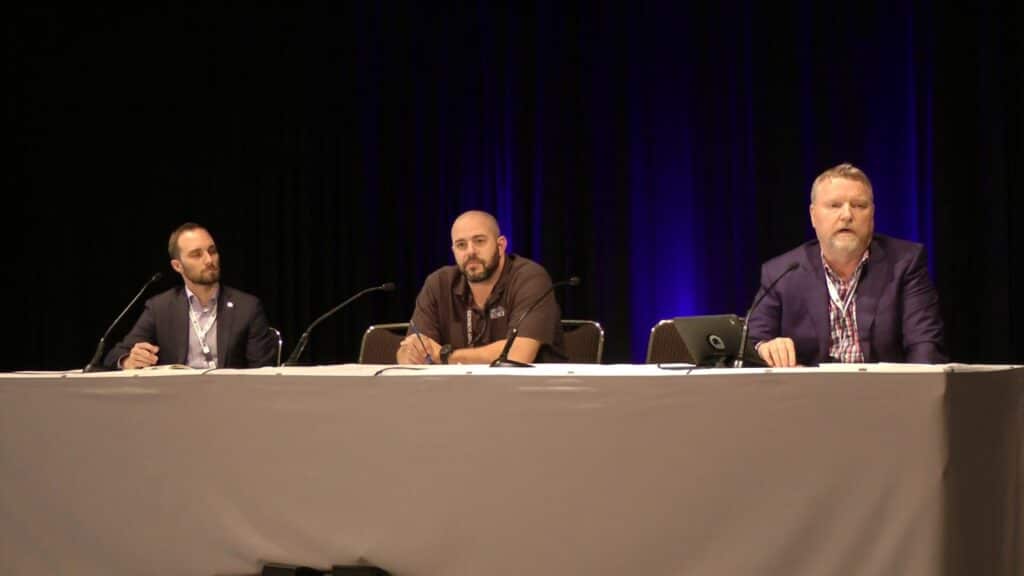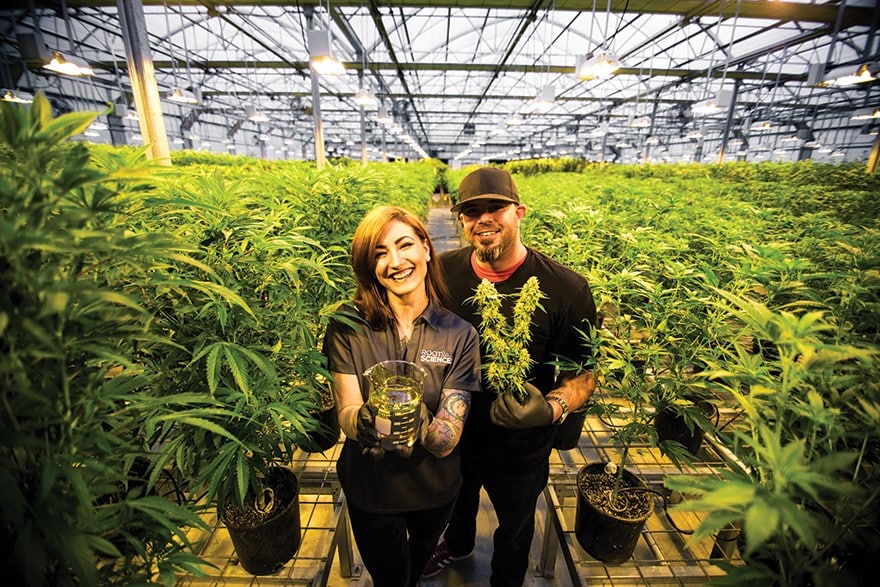FLASH FRIDAY is a weekly content series looking at the past, present and future of capital markets trading and technology. FLASH FRIDAY is sponsored by Instinet, a Nomura company.
When last sighted in the pages of Traders Magazine, Nenad Yashruti was talking about the buy side’s use of order management systems.

“OMSs are listening to their client base and are evolving in the right direction,” Yashruti, then head trader at $1.8 billion Seattle-based Freestone Capital Management, said in a 2006 article. “They’re becoming more customizable and are adding the TCA features we need.”
Flash forward 16 years, and Yashruti, 46, cares about distillation and extraction systems, not order management systems.
Traders Magazine caught up with the cannabis entrepreneur, securities industry expat and single father of two to learn more.
You worked as a sell-side trader for National Securities from 1999-2003 and then you were at Freestone for 12 years. Talk a little about your time as a trader?
I started as a junior trader at National Securities just before the tech bubble burst. Early on I got my Series 7, 55, 24, and 63, i.e. the licenses needed to be a market maker, and I was in a position to move up the ladder pretty quickly.
The opportunity to move to the buy side came up in 2003. Freestone was looking for someone who could handle their block executions in-house, and I had a fair amount of sell-side execution expertise, so they brought me on.
Within a couple of years, technology started picking up for buy-side execution, and we no longer had to call a specialist or use a floor broker to get a trade done. We were able to execute on our own. And this is when the block crossing networks started popping up – Liquidnet, Pipeline, Instinet. I think we were the first company in the Northwest to have all of the major crossing networks in-house. Our brokers certainly weren’t happy with us!
How did you come to be a bit of a ‘thought leader’ in the industry in terms of doing media interviews and speaking at conferences?
I started looking at the trading algorithms that were coming out, and some of their deficiencies. It felt like they were more developed by statisticians and mathematicians as opposed to traders. I explored this further – I spoke with the heads of all the major banks that were issuing algorithms at the time, and nobody really had solid answers to my questions.
So I wrote an article, “Liquidity Right Under Our Nose“. People started taking notice, and then honestly, people who are way smarter than I am started implementing a lot of the things I was talking about.
That spun me into the conferences and summits – I started speaking at those events, fielding questions, and talking to other experts, both traders and developers. And then pretty quickly it felt like what I thought was deficient, was being handled by algorithms. So I feel like I had a at least a little bit of input in the process of algorithms coming out and how ECNs and dark pools interacted with each other.
Why did you leave trading?
I was ready to do my own thing. I felt like there wasn’t much more I could gain or learn from trading at the time. Things were becoming more automated as opposed to just electronic. At some point it feels like you’re just pushing buttons.
A friend and I looked at a number of different businesses outside of finance. When he suggested cannabis, I told him he was nuts because marijuana was never going to be legal. But I was wrong, because Washington ended up voting it in that year (2012), and once that happened we moved full speed ahead.
I met with the partners at Freestone to gauge whether they were comfortable with their head of trading staying on while exploring getting a license for a federally illegal substance. They didn’t think that a lot of their larger clients would be comfortable with that, so I made the decision to leave.
How did the early days go?
It was a long process. It took us about a year of preparation – there was no blueprint on how to enter the industry, all we had were rules and regulations. And there were no consultants.
We started that process in 2012. We applied for our license in 2013 after we found a green zone property that we could build on. We bought the property in 2014 and it spent a year under construction. At the time it was the most high-tech greenhouse in the industry. And it’s not really just a greenhouse – it’s more of a hybrid warehouse-greenhouse. The ceiling automatically opens and closes every 12 hours, and the side walls go up and down automatically for a cross breeze. There was a lot of engineering involved in that building. We started production of cannabis in 2015.
What is your main focus currently?
Our main focus is Root Sciences, which basically purifies cannabis oil.
When we started Root Sciences, rather than being one of 10,000 licensees in the U.S. (that number is now more than 30,000), we wanted to sell something to those licensees instead of competing with them. So we developed a system that purifies crude oil and we figured out how to make it work for cannabinoids. Since then we’ve added about 10 more manufacturers in other areas of the business, so once you cut your plant down, Root Sciences offers everything from the initial extraction to distillation, purification, and isolation. And effectively anyone who is looking to build a new facility and needs everything from design, engineering, equipment selection, SOPs, and training and post-training support, we do it all. We’re in 15 countries on four continents, and we have clients globally.

How many people work for you?
We have about 15 employees. We have low overhead because we have more of a distributor model. When you’re in an industry that’s this young, technology changes. So rather than being a manufacturer of one discipline, we wanted to be a distributor of each because when a new technology comes in, we can adopt that within six months. And God forbid, you chose a manufacturing technology that falls out of favor and something new comes in, your whole business is crushed. For us, we developed a model that’s very adaptable to a growing industry and one that is going to be changing pretty rapidly. It’s starting to settle down, we’ve become now known as an end-to-end solution provider, as opposed to when we started, we really just provided distillation equipment. We do everything post-harvest, all the way to final products.
We think it’s only a matter of time before the US legalizes marijuana. We’ve spent a lot of time making sure that when that light switch gets turned on, we’re ready, while we have been providing the legal states with equipment for years now. I think since 2015, when we started Root Sciences, we’ve probably sold $100 million worth of equipment into the industry, and we anticipate that to grow.
We’re not inventing a model here. There are a few companies that we pay close attention to, in the microbrew industry, for example. These are companies that have been around for 20 and 30 years, and they’re doing nine figures in revenue.

Broadly speaking, it seems the cannabis industry to date has fallen short of expectations, at least in terms of publicly traded cannabis companies. True?
Most cannabis stocks are down somewhere around 90% from their peak. But at the peak there was a lot of anticipation of legalization, and multiples were insanely high. Some CEOs were really just potheads who were able to raise capital – they were just selling ideas, and investors were buying it. And then along with that, you had the collapse of the price of cannabis, after states issued too many licenses and grew too much.
To me it feels like 2002, post-collapse of the tech bubble, after anyone who had an idea of some sort of new technology or new software were getting funded at ridiculous multiples. I think we have to be somewhere near a bottom, because we are starting to see more activity.
The problem for the industry today is because of the public companies getting beat up and the visibility you have into their finances. People aren’t able to raise equity capital as much anymore. I think equity capital raises in the cannabis industry are down about 90% over the previous year, and debt raises are down over 70%. So it’s a difficult market, and some investors will start coming in while bad operators are in the fetal position. There are more realistic valuations now, and there are operators who have proven they can operate properly.

Do you miss anything from your trading days? Do you keep in touch with folks?
I keep in touch with a handful of guys that I was really close with back then. I still know people at Freestone. We’ve done a couple of capital raises. So obviously that pulled me back into the investment world a little bit as we’ve moved along. Do I miss trading? I don’t miss trading. I spent a lot of time with the computer – now I actually get to spend time with people and I feel like we’re a part of something that I can be proud of as we move forward as a post-prohibition product.
I’m happy. Of course as an entrepreneur, you always make some mistakes that you wish you had back. You just try to not make the same mistakes twice.
Overall I’d rather be lucky than smart 10/10 times, but we had a little bit of both pushing us through. It’s been an exciting chage and I expect good things in the future.







